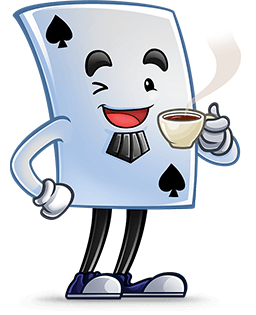

Solitaire, also known as Klondike, is one of the most-known card game in the world. In some areas, it's known as Patience. Often, the game is simply referred to as Solitaire.
There are different versions of the game. In this version, Solitaire 3 cards (or Solitaire Draw Three), the Stock deals three cards at a time and allows for an unlimited number of passes.
There are over 8x10^67 (8 followed by 67 zeros). For the 3-turn version, about 79% are said to be theoretically winnable. However, in practice, players win far fewer games due to wrong moves and because many of the cards are dealt face-down.
Klondike is played with a 52-card deck of standard playing cards. Both ranks and suits of cards are important. From low to high, card ranks run in order from Ace, to Two, and so on up to the King.
This version of Solitaire became well-known in the late 19th century as Klondike, around the time of the Klondike Gold Rush. The game is rumored to have been created by Klondike prospectors.
In 1987, a version of Klondike was released for the Macintosh, included in an 8-game suite of computerized games called Solitaire Royale. After a version was included in Microsoft Windows 3.0 in 1990, the game became hugely popular. As well as the computer, it's now played on smartphones and tablets.
The goal of Solitaire Draw 3 is to build up all 4 suits in the Foundation, each in order from Ace to King.
When the game starts, 28 of the 52 playing cards of a standard deck are dealt into the Tableau. The final 24 cards are placed face-down and squared in the Stock.
The columns in the Tableau can be numbered left to right from 1 to 7. Each column receives the same number of cards as its ordinal, only the bottom-most card of the column is facing-up. In total, 21 face-down (hidden) cards are dealt into the Tableau.
If it fits, the free Waste card or the bottom-most card in a Tableau pile may be moved to the Foundation. An Ace begins a new build while a next-in-rank for its suit extends a build. A card may be moved from the Foundation to the Tableau so long as it's to a valid location.
Within the Tableau, an alternate-colored ordered run or any length may be moved from the bottom of one pile to the bottom of another pile. Still, the target card must be both next in rank to the top card being moved and of the opposite color. The same restrictions apply when moving the free Waste card to the bottom of a pile.
When the last card is removed from atop of a hidden card, it will automatically be brought into play by turning it face-up. When all cards are removed from a pile, its column is then empty. An essential rule of the game is that only a King may be moved into a vacant column.
The game continues until either all the cards are moved into the Foundation, in which case the game is won, or until the player decides to discontinue play, in which case the game is lost. At any point during gameplay, the player has the option (found in the Menu) of resetting the game to the very beginning.
Here are nine tips on how to win at Solitaire:
The game screen is made up of 4 separate areas.
The Foundation is located in the upper-right of the screen. It consists of 4 horizontally-placed marked cells. It's in these cells that suits are built, beginning with the Ace and ending with the King.
Below the Foundation is the Tableau. Horizontally, it consists of 7 unmarked columns. Depending on the current state of the game, any column may be either empty or contain a pile of one or more cards. This is where the majority of the action occurs during a game.
The Stock is located in the upper-left corner. It normally consists of only a squared pile of face-down cards; however, when all the cards have been dealt from it, a rectangle is revealed. This rectangle can be called the empty Stock.
Directly to the right of the Stock is the Waste. When a new game begins, this area is empty.
The Stock and Waste work together to supply a face-up free card that the player may put into play with a legal move. The free card is always the top card in the Waste if there is one. Cards in the Stock may not be put into play other than by dealing them to the Waste.
Whenever the player clicks on a non-empty Stock, three cards (or less if only 1 or 2 remain) are dealt from the Stock to the Waste. Unlike the Stock where cards are always face-down, cards in the Waste are always face-up, although only the top 3 cards (or 1 or 2 if less remain) will be visible.
To initialize an empty Stock, the player must click on it. This causes the entire Waste pile to be moved into the Stock, face-down, and squared. In no other way can cards be put into the Stock.
There is no limit to the number of passes allowed through the Stock.
Solitaire Guides
How to win more Solitaire games
Identifying Positive and negative boards

| Check out our new app Click the icons or scan the QR code with your phone [ ? ]For iPhones - unlock you phone, open up the camera and hold it close to the QR code. For Android - if you don't have a QR Reader app - visit the site from a mobile web browser and click the banner! |

|
|

|